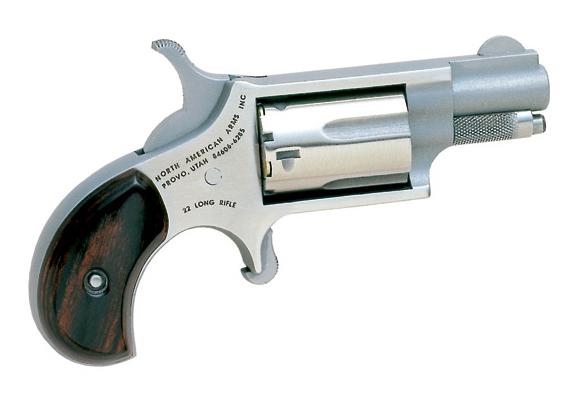It is intended to draw attention to the casual handling of firearms, of any type, which must always be considered charged, and therefore lethal. Even when they aren't.
The news reports, once again, people who do not follow this basic rule and who, among other things, often do not realize (perhaps due to dimensions and calibers considered "small") that they are in possession of an instrument. of deadly danger.
So let's talk about the famous (for some infamous) .22 Long Rifle caliber.
It is probably the most common cartridge in the world. Its widespread use is given by its low cost, its "manageable" dimensions, and its guaranteed high relative speed.
Ideal for hunting rifles for small animals (not in Italy), for drum guns, and semi-automatic basic training guns. E (topical item) for micro weapons. The latter are designed for concealed carry and emergency backup. Given their low sound detection (when used with a suppressor they are almost undetectable), .22 lr caliber weapons are also used for special military and paramilitary applications.
We were talking about "high relative speed"
Kinetic energy (not to be confused with power...) is expressed by the formula 1/2 mv2. Without going into calculations, it seems clear that in this case speed is the key to success.
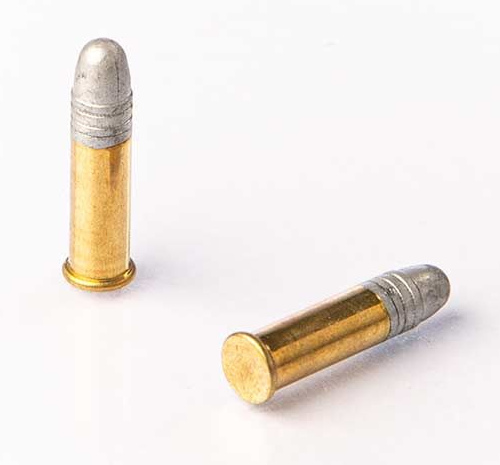 There are essentially three types of ammunition in .22 LR caliber (measured with a rifle with a 65 cm barrel):
There are essentially three types of ammunition in .22 LR caliber (measured with a rifle with a 65 cm barrel):
- standard 40 grains, 330 m/s, energy 13/14 kgm
- high velocity 36 grains, 400+ m/s, energy 21/22 kgm
- subsonic 40 grains, 310 m/s, energy 11/10 kgm
We can therefore say that the ammunition is absolutely capable of doing the job for which it was designed, namely mortally wound the person struck by the blow, even at medium distances, not just close up.
In order to offer an operational explanation on this cartridge, we must point out that you should absolutely not assume that you are relatively protected if you wear heavy or thick clothing: the .22 LR has the sneaky ability to penetrate the textures of common textile fabrics and leather , in addition to humans.
Even more diabolical is the possibility of shattering the nose cone, and damaging organs and arteries in an initially almost undetectable way: a sort of delayed-burst micro-bomb. I know of people who have been affected who thought they had been stung by a wasp, or a pebble thrown from a car tire, and not by a gunshot (intentional or otherwise).
Remembering to take the data listed above to always be reconsidered in practice, it should be specified that the decay is approximately 15% if the weapon used has a 15 cm long barrel and 30% if it is 7.5 cm long, typical of pistols (obviously keeping in mind a "normal" distance of use which, in the case of a long-barreled rifle will be up to 300 meters and 25 and less for pistols).
Attention: the ballistic range of the .22 LR is greater than 1000/1200 metres, and it should be noted that it remains lethal (under certain conditions) for practically its entire flight envelope! (and this is the reason that makes it prohibited, in Italy, for hunting).
An experienced rifle shooter and/or pistol shooter is obviously capable of achieving superior results at distances greater than those considered ballistically “normal” (which we wrote about above). However, in defensive and offensive use with a pistol, distance is not the most sought after peculiarity of the cal. .22 LR.
We mentioned, in addition to emergency backup, concealed carry...
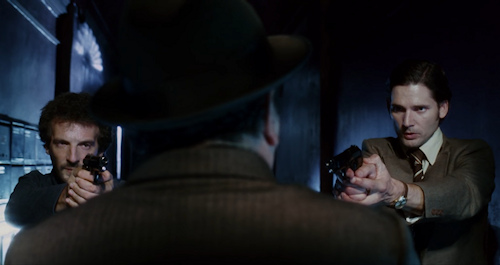 Shall we give some examples? The classic western where the saloon belle keeps a 2-shot Derringer in her garter, the elegant cheater in his jacket pocket. The taxi driver Robert De Niro who extracts it with a snap mechanism from the sleeve of his camouflage. The Mossad's modified bicycle guns or pumps in the film Munich.
Shall we give some examples? The classic western where the saloon belle keeps a 2-shot Derringer in her garter, the elegant cheater in his jacket pocket. The taxi driver Robert De Niro who extracts it with a snap mechanism from the sleeve of his camouflage. The Mossad's modified bicycle guns or pumps in the film Munich.
As far as special operations are concerned, the Israeli secret services, again, are perhaps the true masters of the "special" use of the cal. .22 LR. It is not a military secret that they used (and still use I believe) modified and silenced versions of the very Italian mods. 70 by Beretta.
In addition to being the favorites in the "executive" field, their special forces and secret services were experts in the "dubbing" technique, consisting of firing 2 shots in very rapid succession, thus "delivering" on the target a quantity of lead effectively similar to that of a cartridge comparable to a fairly heavy cal. .32 (7.65), but over a marginally larger surface area. This option is possible above all thanks to the very low recoil of semi-automatic pistols, in particular. Its use was particularly indicated on hijacked planes, it seems, given the need not to damage the structures.
Small parenthesis: one of my instructors pointed out something to me regarding the size of the impact area of bullets. He took 8 .45 caliber 230 grain FMJ cartridges (total approx. 120 grams) and placed them on an area of about thirty square cm. Then he took a 125 gram block of lead, smaller than a pack of cigarettes, to give an idea. The energy of each individual bullet adds to the others (if the repetition rate is very high and the impact area is compact enough). At 270 meters per second, a magazine from a Colt 1911 arriving all at once on a "normal" target destroys it, and it is relatively simple to launch them one at a time.
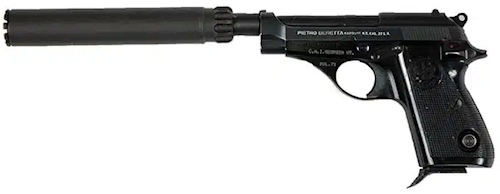 Returning to cal. .22 LR and its silence, it must be said that it is achieved quite easily even with standard ammunition, with a relatively simple suppressor (and not with subsonics alone, as prescribed for other calibers), the noise of which becomes comparable to a snap of the fingers (for further information on the technical topic, please refer to articles on gunshot noise suppression).
Returning to cal. .22 LR and its silence, it must be said that it is achieved quite easily even with standard ammunition, with a relatively simple suppressor (and not with subsonics alone, as prescribed for other calibers), the noise of which becomes comparable to a snap of the fingers (for further information on the technical topic, please refer to articles on gunshot noise suppression).
Simplifying, I think we can say that the cal. 22 LR is the progenitor (I believe the inspirer) of the .223 Remington (and similar), from which Eugene Stoner took inspiration to calibrate his Armalites (AR15 and then M16), today known in its military variant as 5.56x45 NATO: small nose cone, a lot of charge (and therefore, again, a lot of speed).
Let us now focus on the micro pistols, which have recently come "to the disgrace" of the news.
A small drum pistol in cal. 22 LR, like the one now known, was created to use standard ammunition, if not even better subsonic (which I personally would prefer). The drum action guarantees a safe cocking cycle, with (almost) no possibility of jamming, which is essential in defensive use. Given a particular type of use, perhaps in an equally particular context (such as keeping it in the pocket of a pair of jeans, for example in a club), I personally consider it an excellent choice, obviously within a limited range of action, and in an operation that involves extraction, action, escape, given that: one does not have stopping power, you have few shots available, and the sound of the shot will have almost no dissuasive or stunning effect.
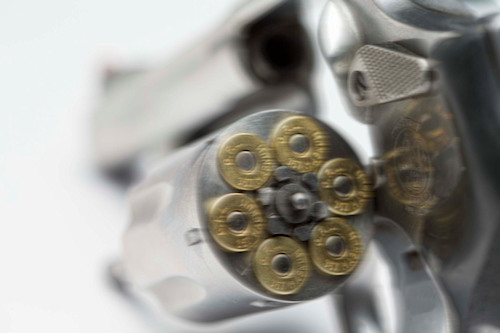 An expert operator would then have suggested to the "well-known shooter from Cuneo" not to keep the first shot available in the cylinder, but only the second and the others, in order to prevent any risk of an accidental shot (a borderline situation, but still conceivable, as seems to have actually happened).
An expert operator would then have suggested to the "well-known shooter from Cuneo" not to keep the first shot available in the cylinder, but only the second and the others, in order to prevent any risk of an accidental shot (a borderline situation, but still conceivable, as seems to have actually happened).
If you make the mistake of loading the weapon in question with high-velocity bullets, thus thinking of obtaining a residual stopping power or a greater range, which are in fact useless and, indeed, a clear operational contradiction, you will be left with a small object, but what in fact it will be able to fire a lethal projectile even hundreds of meters away from the scene of the action, exactly like a larger caliber weapon, if not more.
There are small semi-automatic pistols in cal. 22 LR. I owned a very good one (and learned to shoot with a long barrel Beretta mod.72). For personal defense I wouldn't use them, but they are absolutely fun and economical to use on the range. I suggest, in this case, to pay attention to the temperature of the ammunition, because (in my opinion) the cal. .22 LR fears the cold. I kept the rounds ready for use in my front pocket, and I noticed a significant reduction in missed reloads. Furthermore, there are cal conversions on the market. 22 LR of larger caliber weapons, absolutely fun and economical to use.
Recently, several PRS (Precision Rifle Series) rifle competitions have been held bolt action which are an excellent approach to precision operational (sports) shooting.
To conclude, the .22 Long Rifle caliber, approximately 170 since its creation, maintains its excellent characteristics and peculiarities almost intact, both in the civil and (para)military fields.
Let's hope for better indirect publicity for him.
Images: North American Arms / Bows / web

